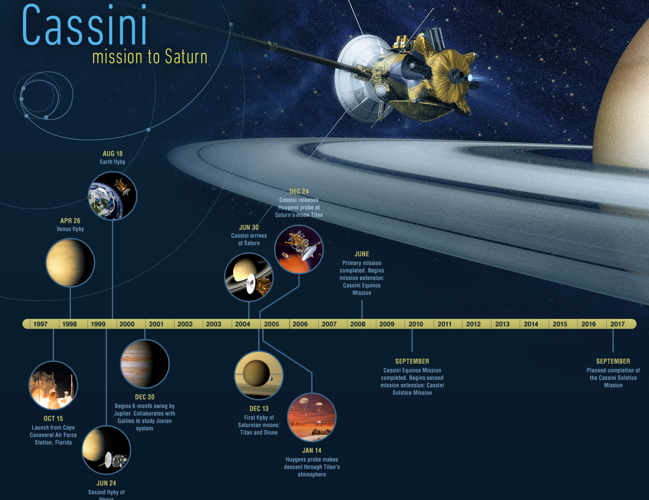
After a couple of years of high inclination, Cassini returned this year to an equatorial orbit that provides opportunities to fly through the icy moons of Saturn. Equipped with advanced systems and instruments Cassini works at wavelengths that the human eye can not see and can capture information about electromagnetic fields present. Recently, Cassini has found traces of water on Enceladus, Saturn’s icy moon, frozen on the outside but with large amounts of liquid water inside.
Among the 12 instruments making up lies a Cassini Ultraviolet Imaging Spectrograph (UVIS) for detecting information, which leads scientists to see in an invisible world where other instruments can not.
NASA’s website refers to Cassini ultraviolet spectrum (UV):
“Ultraviolet is particularly interesting because it includes the light characteristics of some key chemical elements and compounds. These light patterns are like fingerprints in UVIS observations. They allow scientists to identify conclusively what distant objects are made of”.
We understand then that the ultraviolet spectrum is particularly interesting as it includes the features of light and some keys to the composition of chemical elements and compounds. These light patterns are like fingerprints UVIS observations. They allow scientists to identify conclusively that objects are made from a distance.
In the study also OFTTM technology is based on deep blue and ultraviolet spectrum range seizing the opportunities this provides and which enable NASA explore water to millions of light years through its spectral signature, as quoted by the source .
The development of rigorous and exacting OFTTM includes studies of the spectral signatures of hydrocarbons that identify accumulations present in a given area.
The advancement of technology can afford learn more about objects and their composition on other planets but also allows us to identify our own planet.
See full article from NASA on the UVIS in:
http://saturn.jpl.nasa.gov/spacecraft/cassiniorbiterinstruments/instrumentscassiniuvis/
